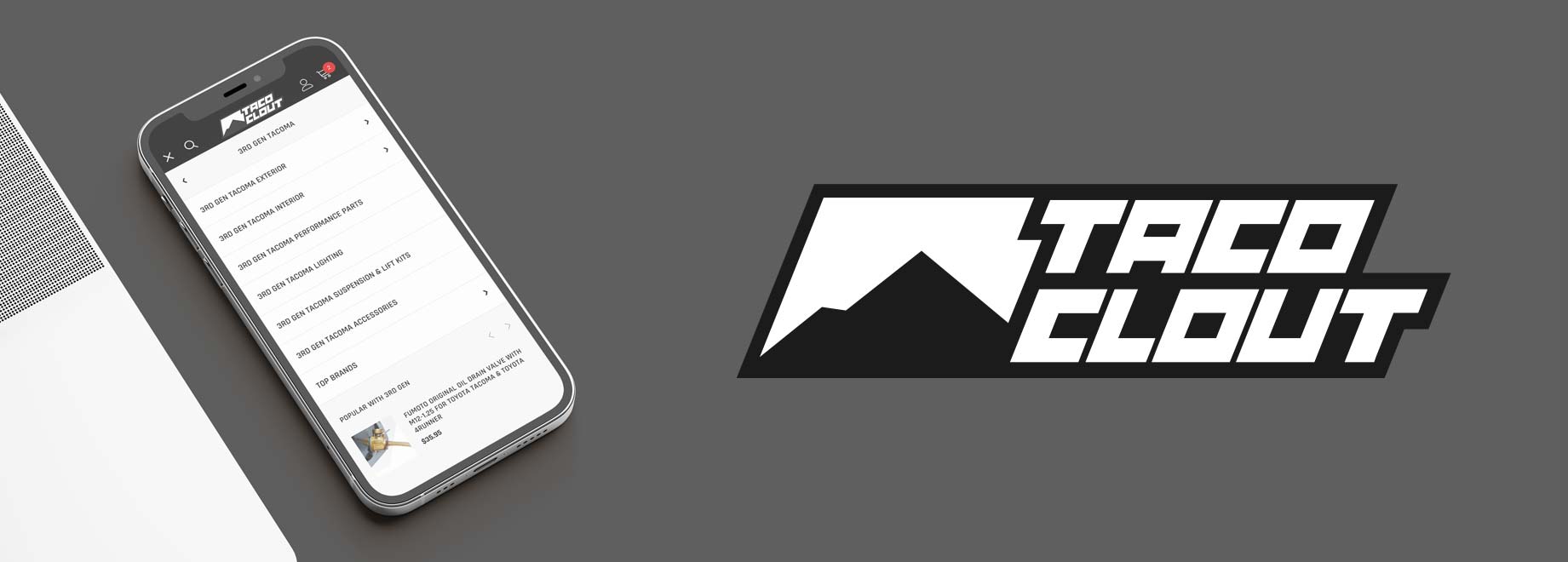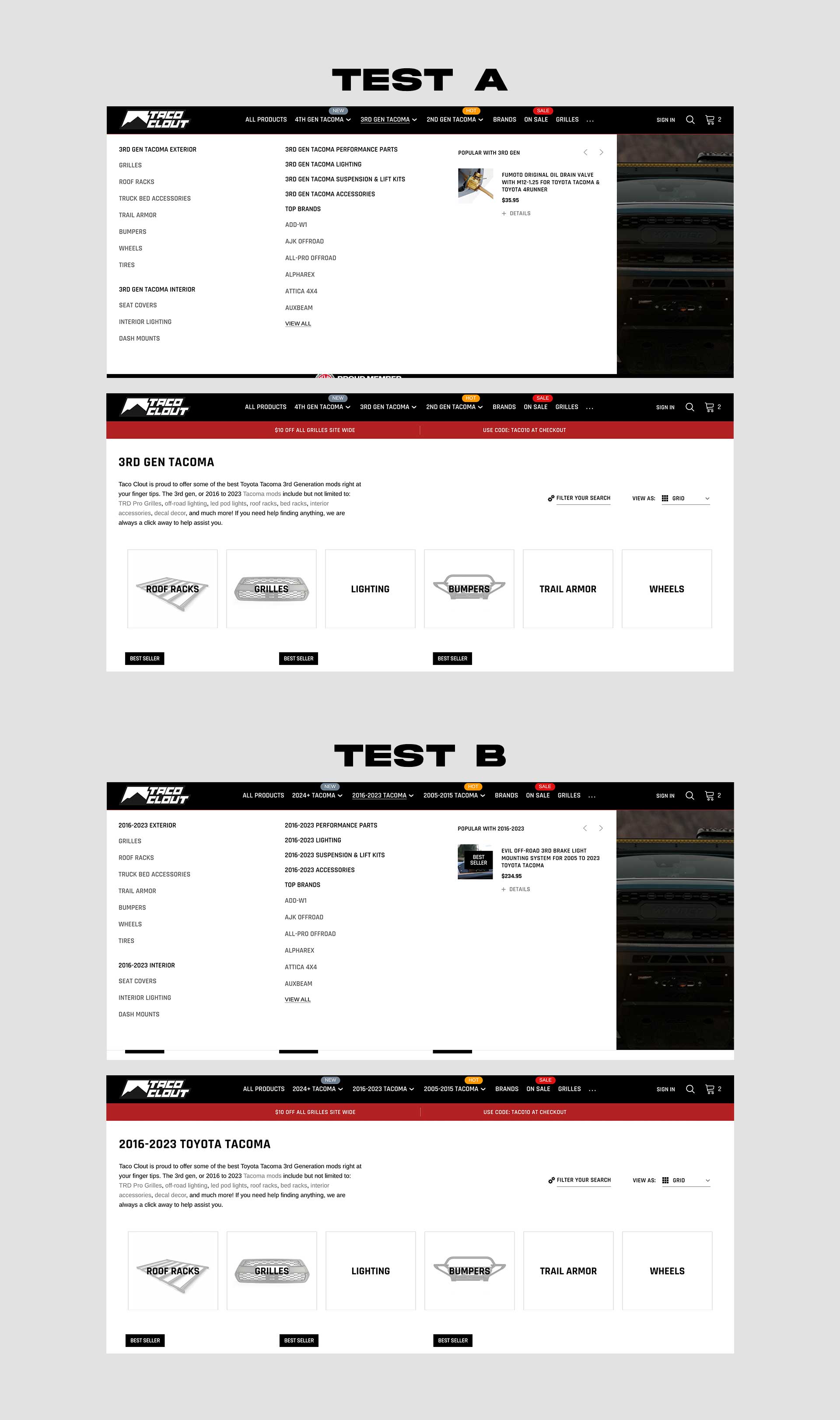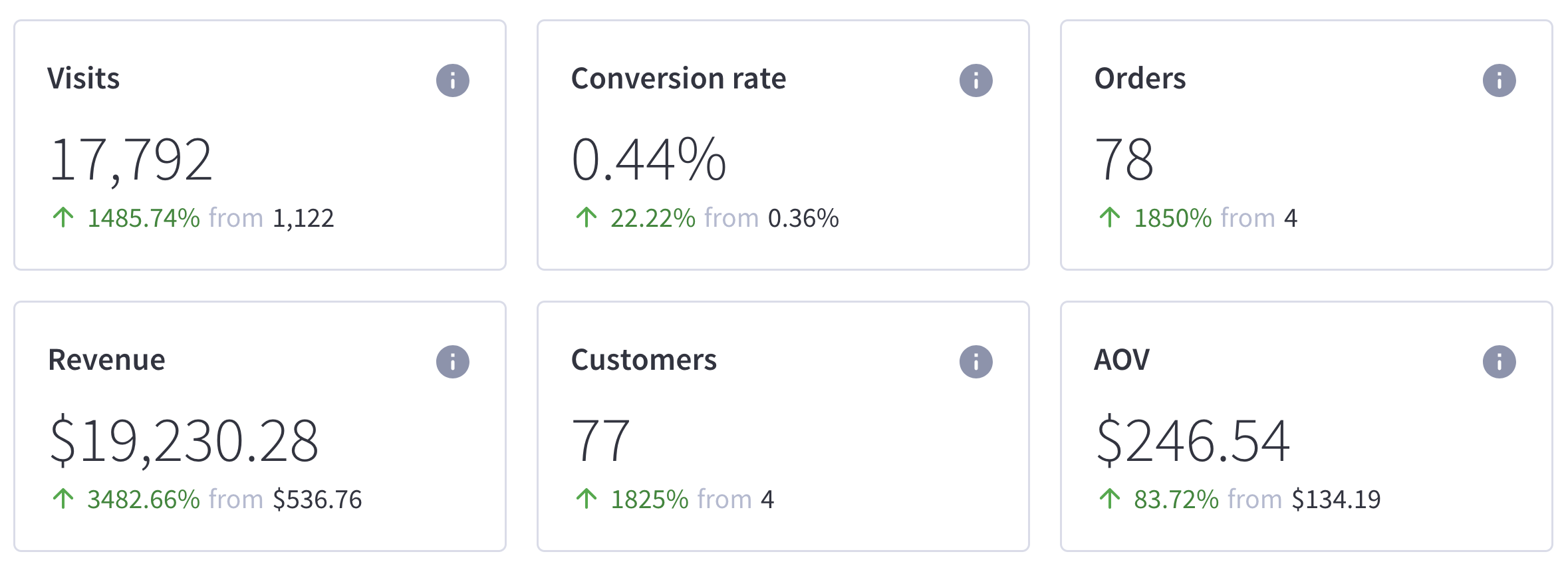Taco Clout
Turning Search Into Strategy
Taco Clout is an eCommerce brand that serves the Toyota off-road community with curated aftermarket parts. Think of it as a digital garage for Tacoma, 4Runner, and Tundra enthusiasts. From bumpers to lighting kits, the site aims to make customization simple—and exciting.

What I did: Led a search experience experiment for an off-road eComm brand. Designed and executed an A/B test comparing parts search by model year vs. generation, with supporting interviews, behavior tracking, and conversion analysis.
What I learned: The best UX decisions come from aligning with user vocabulary and culture. In this case, that meant designing for how enthusiasts *talk*—not how OEM catalogs are structured. There is power in slang with SEO and users.
Understanding the User's Mindset
Toyota drivers, especially in the off-road scene, often describe their vehicles using generation-based language—like '3rd Gen Tacoma.' But the original site design assumed people searched by model year. This created confusion, since many parts are cross-compatible across several years within a generation.
The UX Hypothesis
To test whether users were more successful and satisfied searching by generation instead of year—and to validate this through real behavior, not just assumptions.
How We Tested the Hypothesis
- 1. Talking to Real Tacoma Owners
I started by speaking with actual Tacoma owners—asking how they think about their truck, how they shop, and what frustrates them when trying to find the right gear online.
- 2. Traffic & Behavior Patterns
I pulled Shopify analytics, heatmaps, and scroll depth metrics to understand how people moved through the site and where they dropped off. Google Search Console also revealed how people were phrasing their queries.
- 3. Running the A/B Test
I designed two versions of the site’s navigation: one filtered by model year, the other by vehicle generation. Users were randomly shown one or the other for two weeks.
- 4. What We Measured
To measure success, I focused on two core metrics: conversion rate (did they buy?) and time on page (were they stuck or cruising?).
- 5. Search Habits in the Wild
I reviewed top internal search terms and external Google queries. Most used generation terms like '2nd gen Tacoma bumper' rather than specific years.

The test results aligned almost exactly with how users talked about their trucks in forums and Reddit threads. It was clear that generation-based language was the standard, not the exception.

What Changed — Conversions
Conversion Rate
Version B (Search by Year): 0.36%
Version A (Search by Generation): 0.44% — a 22% lift in conversion rate. More users found what they needed, faster.
What Changed — Time on Page
Time on Page
Version B: 3 minutes — users spent more time hunting than browsing. Microsoft Clarity recordings showed frustration, back-and-forth clicks, and lots of pogo-sticking.
Version A: 1.5 minutes — they got what they needed fast. The experience felt intuitive and add-to-cart rates increased noticeably.
Outcome & Takeaways
Search by generation clearly outperformed search by year. This confirmed that the site needed to reflect the language of the community, not just the vehicle catalog. The experiment also revealed how aligning UX with tribal knowledge can boost product discoverability and reduce user friction.
For example, the 2016 to 2023 Tacomas are nearly identical, yet users consistently refer to them as '3rd Gen.' That insight led to additional tests around copy labeling, comparing 'Generation' vs. 'Gen' to match the tone of forums and influencer content.
What I’d Recommend Next
Implement Parts Search by Generation: Update the website's parts search interface to allow users to search for parts by generation.
Improve User Education: Provide educational resources to help users understand the concept of searching for parts by generation and its benefits.
What’s Next?
Continuously monitor user feedback and behavior to further optimize the parts search experience.
Explore additional features such as predictive search and personalized recommendations to enhance the user experience further.
